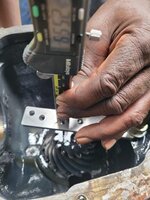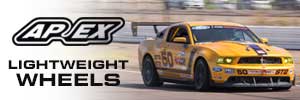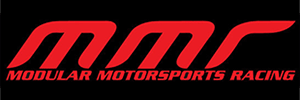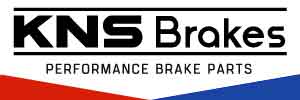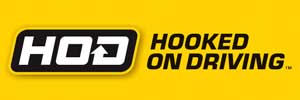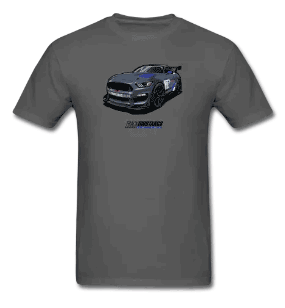So it seems inevitable that after 30 plus years, I'm going to have to install a ring and pinion, not such a big deal, but if you are forced to use a non Ford ring and pinion, it's a bit of a hassle.
After looking over misc ring and pinion tools, some costing $85 to some as much as $850, I decided to build my own.
There are a couple of assumptions, the foremost is that the bearing caps actually reflect the halfway point of the center of the bearing. You will need to measure that to make sure.
Once that is done, you will need to procure some .250, aluminum stock. It won't actually be .250, you will have to sand it down to exactly .250.
Next, drill a hole in one end, big enough for at least a 9/16 bolt.
At this point, i checked several scrap diffs around here to make sure the 1 inch wide stock would fit all the bearing caps, of course the answer was no, which meant I needed to take off some material.
I then drilled some random holes in the other end to match any of the pinion locations that I had lying around my scrapyard. These holes are needed so I can drop my digital vernier calipers through so I can measure the depth to the pinion face.
All i now need to do ismeasure it up, and subtract the .250 for the home made jig, and I now have my pinion depth.
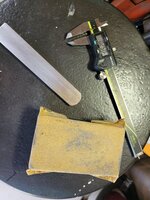
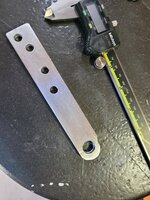
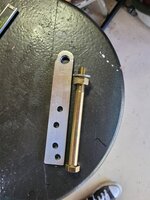
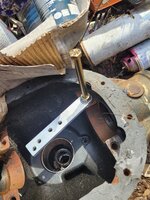
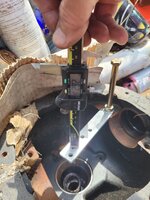
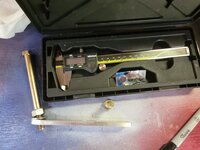
After looking over misc ring and pinion tools, some costing $85 to some as much as $850, I decided to build my own.
There are a couple of assumptions, the foremost is that the bearing caps actually reflect the halfway point of the center of the bearing. You will need to measure that to make sure.
Once that is done, you will need to procure some .250, aluminum stock. It won't actually be .250, you will have to sand it down to exactly .250.
Next, drill a hole in one end, big enough for at least a 9/16 bolt.
At this point, i checked several scrap diffs around here to make sure the 1 inch wide stock would fit all the bearing caps, of course the answer was no, which meant I needed to take off some material.
I then drilled some random holes in the other end to match any of the pinion locations that I had lying around my scrapyard. These holes are needed so I can drop my digital vernier calipers through so I can measure the depth to the pinion face.
All i now need to do ismeasure it up, and subtract the .250 for the home made jig, and I now have my pinion depth.






